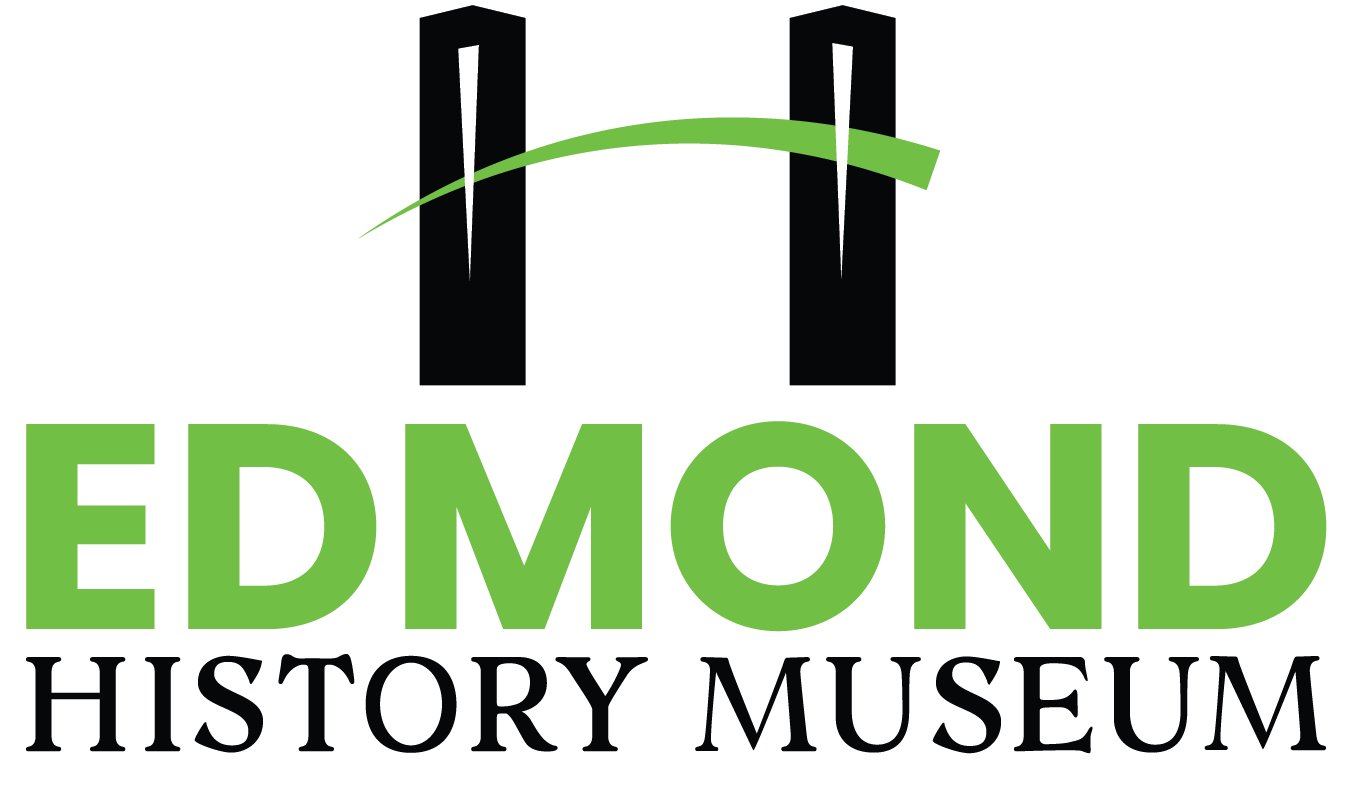
Museum work-study student, Amber Duren, demonstrates the appropriate pencils used for labeling old photographs.
By Amy Dee Stephens
“Awesome photo! I wonder who it is?”
Any museum professional or family historian understands how tragic it is to stare at an amazing old photo—and have no clue as to its identify, date or location. The photo was taken for a reason, but the reason is lost forever.
So, I beg you to PLEASE, take a moment to label your favorite photos. If you’re willing to display it in your home for a year, it’s worth a moment of time to write a name and date on the back.
Because it might end up in the hands of your great-grandchild. OR a museum!
Bless the Labelers
Recently, the museum received a donation of 1921-1922 athletic photographs from Edmond High School. The photos had been collected and used at a high school reunion. Some dear person or committee took the time to write down the name of each person in the picture. We were overjoyed! The faces are no longer nameless—and who knows how that simple act might allow us to identify people in other unlabeled photographs.

Edmond High School athletics, 1921-1922, including helpful typed and handwritten lists of names identifying each player.
So here are a few tips for how to best label your photographs so that they suffer the least damage in the future…
- Handle photos by the edges: So often, people hold photos like they hold a sheet of paper—with their thumb in the middle. Right on top of Uncle Bob’s face. The oils on your fingers will eventually eat away the top layer photograph and leave permanent deterioration. Hold images by the edges so that Uncle Bob won’t disappear forever.
- Use pencil for labeling: Pencil lead #1 or #2 is the museum gold standard for labeling anything on paper, because it is soft and erasable. Don’t press too hard, because it will leave a depression on the reverse side. If the photograph is glossy or slick, we recommend a Stabilo-brand pencil, which is darker and softer. Avoid ink pens or markers, as the chemicals will create permanent, damaging change over time.
- Name, Date and Location, please: These are the 3 most important pieces of information about a photograph. Sometime the photographer or the event is noteworthy instead—but truly, something is better than nothing.
- Find a location that is discreet, preferably the back: Writing on the back is generally best, although some old photos or Polaroids have margins around the edge which would work, too. It’s best to write the name, date, location along the top or bottom edge, just to decrease the chance of damaging the important center of the image. For the family historian, labels are often written onto scrapbooks pages or on separate labels. It’s still worth the moment to write a pencil label on the back in case the photo and label get separated. Once separated, the info is gone forever.
- Label your digital image files: All the rules change when it comes to digital photographs. Museums are still grappling over the best way to save electronic images into an archive—however, it will be of value to you and to future viewers if you add label information into the name of the file. The camera name of DSC_0041 doesn’t help anyone, but “Osa Lee Banzett, Edmond OK, 1928” is useful. And searchable. Just be aware that your computer will scream if the title gets too long, so keep it short and simple.
Labeling photos is a moment worth a lifetime!
Now that I’ve begged you to carefully label your photographs—I’m headed home to do the same. I just hope I can remember what year that cute photo of my nephew was taken (you know, the one hidden in the frame behind his three most recent school pictures). Historians are people, too.
